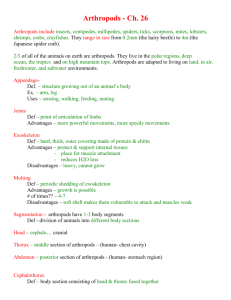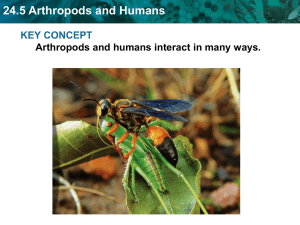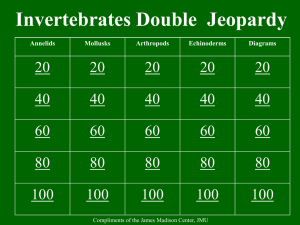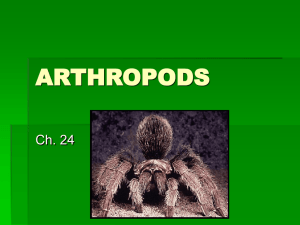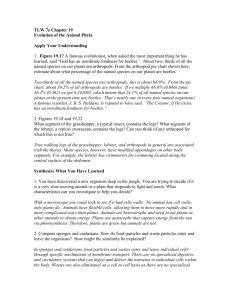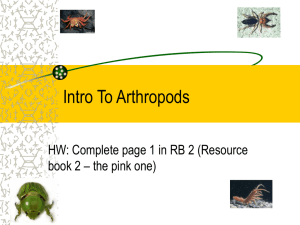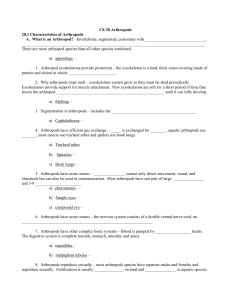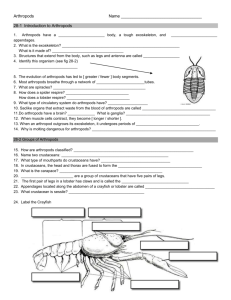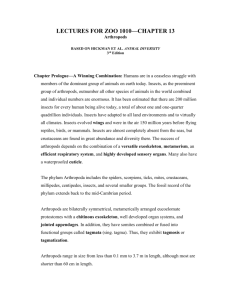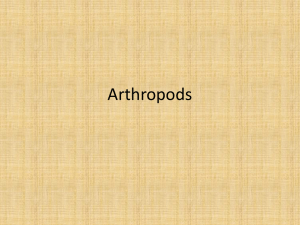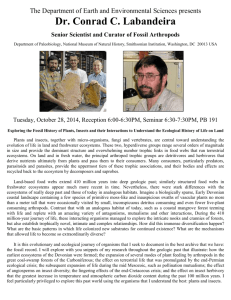Biol 11
advertisement
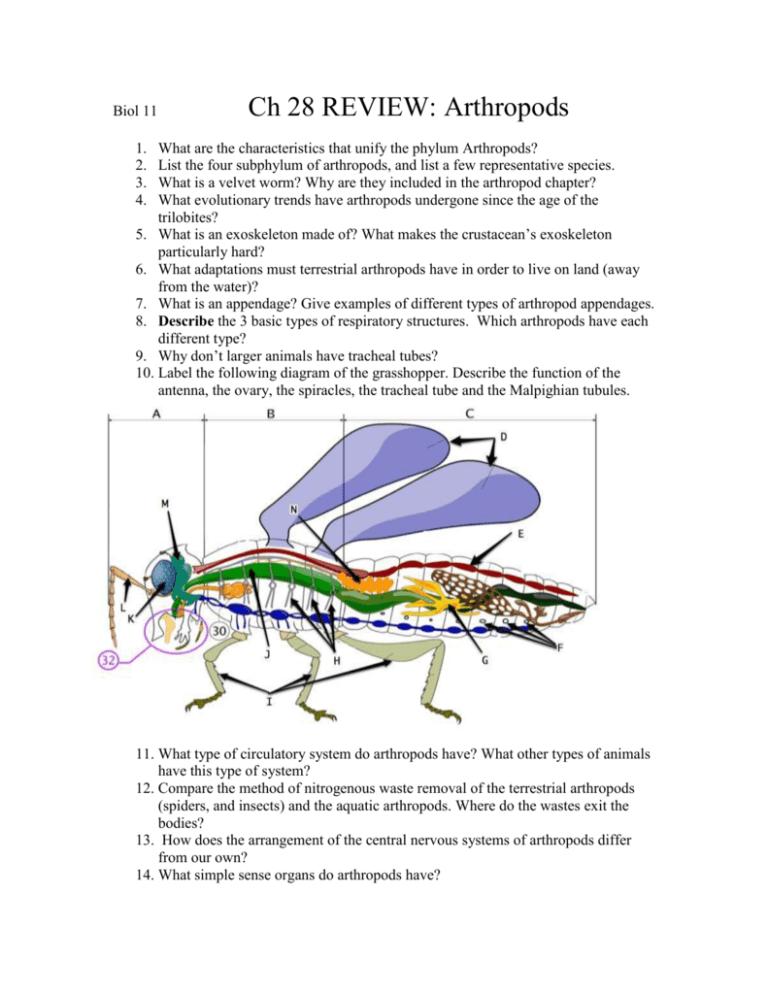
Biol 11 Ch 28 REVIEW: Arthropods 1. 2. 3. 4. What are the characteristics that unify the phylum Arthropods? List the four subphylum of arthropods, and list a few representative species. What is a velvet worm? Why are they included in the arthropod chapter? What evolutionary trends have arthropods undergone since the age of the trilobites? 5. What is an exoskeleton made of? What makes the crustacean’s exoskeleton particularly hard? 6. What adaptations must terrestrial arthropods have in order to live on land (away from the water)? 7. What is an appendage? Give examples of different types of arthropod appendages. 8. Describe the 3 basic types of respiratory structures. Which arthropods have each different type? 9. Why don’t larger animals have tracheal tubes? 10. Label the following diagram of the grasshopper. Describe the function of the antenna, the ovary, the spiracles, the tracheal tube and the Malpighian tubules. 11. What type of circulatory system do arthropods have? What other types of animals have this type of system? 12. Compare the method of nitrogenous waste removal of the terrestrial arthropods (spiders, and insects) and the aquatic arthropods. Where do the wastes exit the bodies? 13. How does the arrangement of the central nervous systems of arthropods differ from our own? 14. What simple sense organs do arthropods have? 15. How do compound eyes differ from our own eyes? What are compound eyes able to detect better than we can? 16. What other sense organs do arthropods have? What unusual locations do some of theses organs have? 17. What types of defence mechanisms do arthropods employ? 18. Describe the process of moulting. 19. Describe the process of incomplete metamorphosis. 20. Describe the process of complete metamorphosis. 21. What controls the processes of moulting and metamorphosis? 22. How do chemists plan to use hormones to control crop-eating pests? 23. What are the characteristics that unify the sub-phylum chelicerates? 24. What structures do chelicerates “lack” that most other arthropods have? 25. What are chelicerae? What are pedipalps? 26. Label the diagram of the spider. Describe the function of the pumping stomach, the malpighian tubules, the silk gland and the spinnerets. 27. What does a horseshoe crab look like? Is it really a crab? 28. What animals are included in the arachnids? 29. How do you identify an arachnid? 30. Describe the process that spiders use to capture and eat their prey. 31. What are the characteristics that unify the Crustaceans? 32. What are the third pair of appendages on a crustacean? How can these differ in structure? 33. What are the characteristics that unify the Uniramians? 34. What does uniraminan mean? What do branched appendages (of the other arthropods) usually contain? 35. How can you tell the difference between centipedes and millipedes? (2 ways) 36. What are the characteristics that unify the insects? 37. Compare the insects, the crustaceans and the chelicerates in terms of body part divisions, number of legs on those body parts, and antennae. 38. What special adaptations do honeybees possess to distribute pollen, make honey, make honeycombs, tell each other where food is and keeping themselves warm in cooler weather. 39. What adaptations do some flying insects have for flight? 40. How is a queen different from any other female in an insect colony? 41. How do honeybees organized the fertilization of the queen? What happens to the “sperm donors”? 42. What determines whether a female develops into a queen or not? How is this achieved? What controls this event? 43. How do honeybees communicate with each other regarding the location of food? 44. What are the green glands in crayfish for? 45. Label the diagram of a crayfish.

